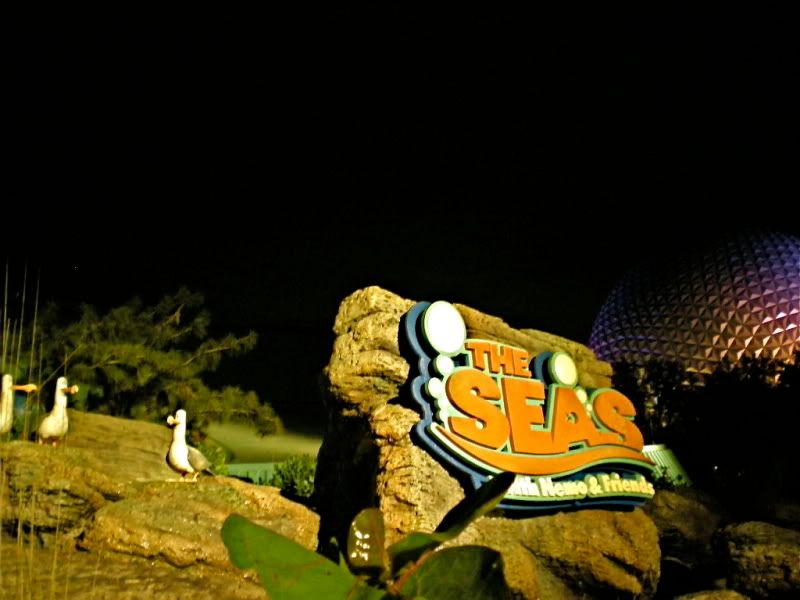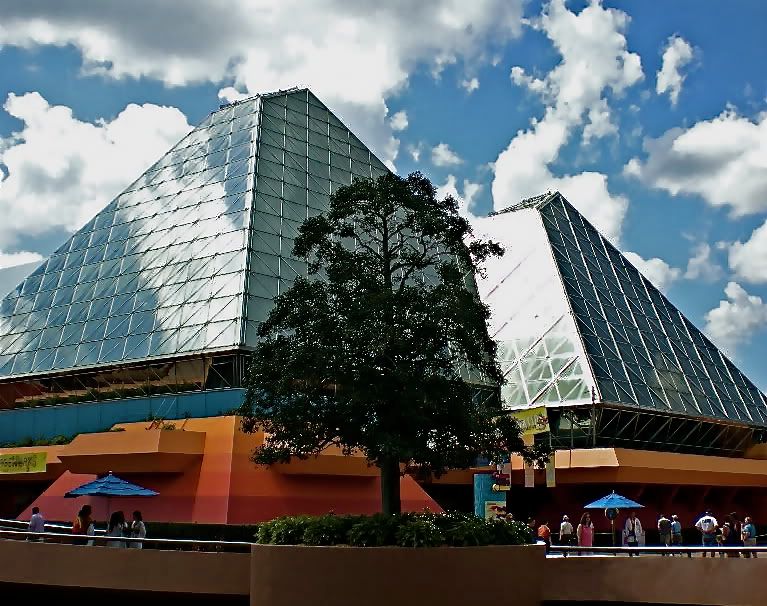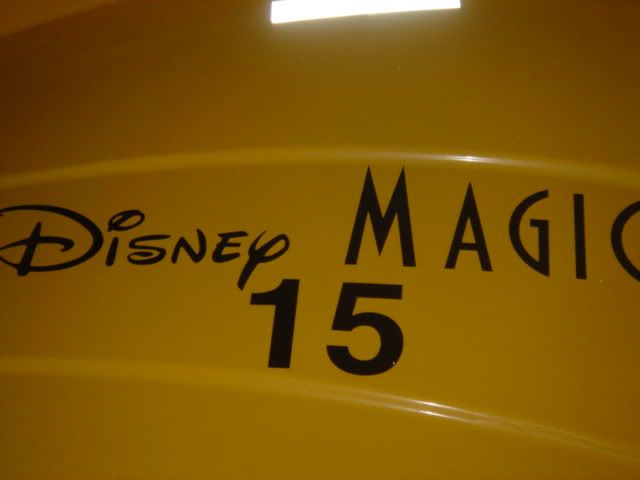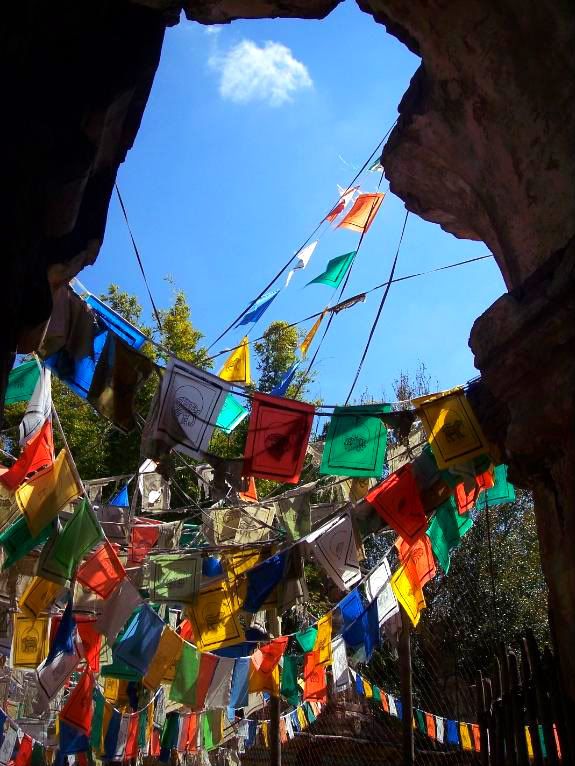-
The new WDWMAGIC iOS app is here!
Stay up to date with the latest Disney news, photos, and discussions right from your iPhone. The app is free to download and gives you quick access to news articles, forums, photo galleries, park hours, weather and Lightning Lane pricing. Learn More -
Welcome to the WDWMAGIC.COM Forums!
Please take a look around, and feel free to sign up and join the community.
You are using an out of date browser. It may not display this or other websites correctly.
You should upgrade or use an alternative browser.
You should upgrade or use an alternative browser.
WDW Picture of the Day Thread (Part 5)
- Thread starter WDWFigment
- Start date
blackthidot
Well-Known Member
- In the Parks
- Yes
Cool pic Krank...it looks like a painting!
stitch131313
New Member
blackthidot
Well-Known Member
- In the Parks
- Yes
Thats a good pick WM dude!
Gorjus
Well-Known Member
Shutter: 1/60 - 1/100
Aperture: as wide open as you can go (f/1.4 - f/5.6)
ISO: 800 - 3200
My ideal settings are 1/100, f/1.4, ISO 800.
My problem is that the widest I can go is 3.5/4.0/5.6 depending on goodness knows what. Also the highest ISO I can get is 1600, but I can up the exposure a few stops. Sometimes I was blowing them out, sometimes it was so dark you couldln't see anything. Sometimes it looked OK. I'll try those settings next time and try going up a fews stops as well. Thanks.
1DisneyDad
Well-Known Member
krankenstein
Well-Known Member
Cool pic Krank...it looks like a painting!
Thanks! I had to do a little work on it to make it look like that, but I thought it was cool.
Mine for today:

Azerin
Active Member
Azerin...That is absolutely amazing! Great job!
Thank you!
Azerin-Your shots make me want to visit DLP!
Thank you! Glad that they do... it is an awesome place! Everyone should go!
I agree about Azerin's pictures making me want to visit DLRP (the first really good pictures I've ever seen of Paris). Although I really want to visit Tokyo (I've never seen really good pictures of Tokyo...when are you heading there?)
Thank you again Figgy
Azerin - Another beautiful DLP picture! And an amazing angle too!
Thank you! There was actually a big constuction wall all around the XWing... which I didn't want in any pictures... so had to search for angles that would leave the wall out... kinda glad I had to look because I love this one!
Wow...I wish we had parade floats that looked like that. If we did...I might stop to see a parade. :lol:
Thank you! Yeah... their parade floats are awesome! wish MKs parade had floats that were half as good... not only did they look awesome... they were very "alive" with lots of moving parts, interesting lighting that changed... had lots of smoke effects.... some even had smell effects!
My problem is that the widest I can go is 3.5/4.0/5.6 depending on goodness knows what. Also the highest ISO I can get is 1600, but I can up the exposure a few stops. Sometimes I was blowing them out, sometimes it was so dark you couldln't see anything. Sometimes it looked OK. I'll try those settings next time and try going up a fews stops as well. Thanks.
To add on to Figgy's advice... one key is the exposure metering mode... you want one that just uses the center of the picture to calculate the exposure settings... some/all of this you probably know... but for the benefit of others... the "normal" way a camera figures out how to expose something (how long to leave the shutter open, what ISO to use, how big of an aperture (how much light to let in)) is based on some kind of calculation that is based on the whole picture... this is bad for things like fantasmic where there are a lot of very dark areas... so in order to make the whole picture "bright enough" it will over expose the areas you are really interested in... so instead you can set the camera to calculate the exposure based on just the very center of the picture and not the whole frame.... so for example if you are taking a picture of Brave Little Tailor Mickey... and he is at the center of the picture... it will try to property expose Mickey and will ignore the rest of the picture... that could end up being too dark or blown out but since all you *really* want is Mickey... that doesn't matter. Most DSLRs have at least two modes that are like this... once of which just takes the *very* center of the picture (called "Spot" on Canon)... this is good but sometimes the area it uses is too small... for example in spectro... if I happen to have a bright cluster of lights at the very center it can lead to the whole picture being underexposed... the next one is one that gives more priority to the center but takes a slightly bigger area into consideration but the farther from the center the less it cares... on canons this is called "Partial"... I used to used Spot all the time for spectro and fant... recently I have been using Partial more often.
I go with a little faster shutter speed than Figgy mostly because I want to get rid of as much movement blur as possible... sometimes the characters move slowly enough to not get some with lower speed but not normally... also on Fantasmic I am normally zoomed in alot and my best zoom lens doesn't have IS sooo... need a higher shutter speed... to compensate for that I use a higher ISO (3200)... I also go with a slightly negative exposure compensation... but really it is only neg 1/3 so that isn't that big a difference... also... if you can shoot in RAW... gives you a lot more room to play in post processing
So... my normal settings are Shutter Priority, 1/125 - 1/160 sec, ISO 3200, Partial Metering, neg 1/3 exposure compensation
With those settings I get pictures like these which if you know are vastly different lighting levels (and if you click on the picture... can get the complete EXIF data):



Hope you don't mind the extra pics for today... but think they illustrate what I am talking about...
So now... for my REAL picture for today!
DLRP's It's a Small World! If you look closely... you will see frost on the bush and grass at the bottom of the picture... definitely not something you will normall see in FL or CA! LOL

Clicking on the picture will take you to its flickr page
Gorjus
Well-Known Member
This might be the best Fantasmic photo I got the other night. That isn't saying much, but at least you can see Ariel's face. I do like the flourish with the banner.

Azerin, your benefit is being able to go to 3200. I can't do that. I can only go to 1600. I do meter for the center area, I don't think that is the problem. I appreciate the advice. I'm going to try both yours and Figgy's advice next time I go.

Azerin, your benefit is being able to go to 3200. I can't do that. I can only go to 1600. I do meter for the center area, I don't think that is the problem. I appreciate the advice. I'm going to try both yours and Figgy's advice next time I go.
Disneyfalcon
Well-Known Member
Azerin that is another beautiful picture!!
I have been sticking to spot metering, but your explanation makes a lot of sense. Maybe I should give partial a try!
I have been sticking to spot metering, but your explanation makes a lot of sense. Maybe I should give partial a try!
Thank you again FiggyI am really glad they make you and others want to go there... I know it sounds kinda chessy but after our trip I told Dan I really hoped that my pictures showed just how awesome DLRP is and how much I loved it... seems like they have been at least partially successful
As far as Tokyo... actually... hopefully next year!
I am not so glad it makes me want to go there. Money I don't need to be spending! You're a bad influence.
Azerin said:To add on to Figgy's advice... one key is the exposure metering mode... you want one that just uses the center of the picture to calculate the exposure settings... some/all of this you probably know... but for the benefit of others... the "normal" way a camera figures out how to expose something (how long to leave the shutter open, what ISO to use, how big of an aperture (how much light to let in)) is based on some kind of calculation that is based on the whole picture... this is bad for things like fantasmic where there are a lot of very dark areas... so in order to make the whole picture "bright enough" it will over expose the areas you are really interested in... so instead you can set the camera to calculate the exposure based on just the very center of the picture and not the whole frame.... so for example if you are taking a picture of Brave Little Tailor Mickey... and he is at the center of the picture... it will try to property expose Mickey and will ignore the rest of the picture... that could end up being too dark or blown out but since all you *really* want is Mickey... that doesn't matter. Most DSLRs have at least two modes that are like this... once of which just takes the *very* center of the picture (called "Spot" on Canon)... this is good but sometimes the area it uses is too small... for example in spectro... if I happen to have a bright cluster of lights at the very center it can lead to the whole picture being underexposed... the next one is one that gives more priority to the center but takes a slightly bigger area into consideration but the farther from the center the less it cares... on canons this is called "Partial"... I used to used Spot all the time for spectro and fant... recently I have been using Partial more often.
I go with a little faster shutter speed than Figgy mostly because I want to get rid of as much movement blur as possible... sometimes the characters move slowly enough to not get some with lower speed but not normally... also on Fantasmic I am normally zoomed in alot and my best zoom lens doesn't have IS sooo... need a higher shutter speed... to compensate for that I use a higher ISO (3200)... I also go with a slightly negative exposure compensation... but really it is only neg 1/3 so that isn't that big a difference... also... if you can shoot in RAW... gives you a lot more room to play in post processing
So... my normal settings are Shutter Priority, 1/125 - 1/160 sec, ISO 3200, Partial Metering, neg 1/3 exposure compensation
With those settings I get pictures like these which if you know are vastly different lighting levels (and if you click on the picture... can get the complete EXIF data):
Hope you don't mind the extra pics for today... but think they illustrate what I am talking about...
So now... for my REAL picture for today!
DLRP's It's a Small World! If you look closely... you will see frost on the bush and grass at the bottom of the picture... definitely not something you will normall see in FL or CA! LOL
Clicking on the picture will take you to its flickr page
Awesome picture today.
With as much as you've shot Fantasmic/Spectro, I'm surprised you still meter them. Granted, you have a more advanced camera than me so maybe your camera's metering is more accurate generally, but I've found that even with centered metering, the camera miscalculates the settings.
(The following mostly applies to Spectro, where the amount of light on the floats is constant) There's so little light that I just go as wide open as I can with the aperture, and go with as high of a shutter speed as I can (higher than the camera would want) to freeze the action, and keep the ISO at an area where it won't be too grainy (for the D40, this is only 800, I know those Canons are capable of a lot better), and I just clean up the rest in post. That way I don't have to worry about the camera picking some poor shutter speed or aperture because it happened to meter when there was a void between floats or something like that. Of course, I change the settings a bit when the performers pass, but I've found that this method, for me at least, produces more consistent results than letting the camera do its thing.
The lens I'm using for these situations (Sigma 30mm f/1.4) doesn't have VR/IS either, but that really doesn't make a difference on these shots, because VR/IS only helps with camera shake, it can't make moving subjects more stable. So if you're using any shutter speed above 1/50 (or thereabouts) on a lower focal length, VR/IS isn't going to do anything for you.
daliseurat
Member
To add on to Figgy's advice... one key is the exposure metering mode... you want one that just uses the center of the picture to calculate the exposure settings... some/all of this you probably know... but for the benefit of others... the "normal" way a camera figures out how to expose something (how long to leave the shutter open, what ISO to use, how big of an aperture (how much light to let in)) is based on some kind of calculation that is based on the whole picture... this is bad for things like fantasmic where there are a lot of very dark areas... so in order to make the whole picture "bright enough" it will over expose the areas you are really interested in... so instead you can set the camera to calculate the exposure based on just the very center of the picture and not the whole frame.... so for example if you are taking a picture of Brave Little Tailor Mickey... and he is at the center of the picture... it will try to property expose Mickey and will ignore the rest of the picture... that could end up being too dark or blown out but since all you *really* want is Mickey... that doesn't matter. Most DSLRs have at least two modes that are like this... once of which just takes the *very* center of the picture (called "Spot" on Canon)... this is good but sometimes the area it uses is too small... for example in spectro... if I happen to have a bright cluster of lights at the very center it can lead to the whole picture being underexposed... the next one is one that gives more priority to the center but takes a slightly bigger area into consideration but the farther from the center the less it cares... on canons this is called "Partial"... I used to used Spot all the time for spectro and fant... recently I have been using Partial more often.
I go with a little faster shutter speed than Figgy mostly because I want to get rid of as much movement blur as possible... sometimes the characters move slowly enough to not get some with lower speed but not normally... also on Fantasmic I am normally zoomed in alot and my best zoom lens doesn't have IS sooo... need a higher shutter speed... to compensate for that I use a higher ISO (3200)... I also go with a slightly negative exposure compensation... but really it is only neg 1/3 so that isn't that big a difference... also... if you can shoot in RAW... gives you a lot more room to play in post processing
So... my normal settings are Shutter Priority, 1/125 - 1/160 sec, ISO 3200, Partial Metering, neg 1/3 exposure compensation
With those settings I get pictures like these which if you know are vastly different lighting levels (and if you click on the picture... can get the complete EXIF data):
Hope you don't mind the extra pics for today... but think they illustrate what I am talking about...
I can't go to 3200 either. And I definitely don't have a fast zoom lens like some do! And I don't really like 1600 as I start to see a good bit of noise. How are you compensating for noise? Do you post process? Your results posted are always terrific!
Azerin
Active Member
I am not so glad it makes me want to go there. Money I don't need to be spending! You're a bad influence.
Awesome picture today.
With as much as you've shot Fantasmic/Spectro, I'm surprised you still meter them. Granted, you have a more advanced camera than me so maybe your camera's metering is more accurate generally, but I've found that even with centered metering, the camera miscalculates the settings.
(The following mostly applies to Spectro, where the amount of light on the floats is constant) There's so little light that I just go as wide open as I can with the aperture, and go with as high of a shutter speed as I can (higher than the camera would want) to freeze the action, and keep the ISO at an area where it won't be too grainy (for the D40, this is only 800, I know those Canons are capable of a lot better), and I just clean up the rest in post. That way I don't have to worry about the camera picking some poor shutter speed or aperture because it happened to meter when there was a void between floats or something like that. Of course, I change the settings a bit when the performers pass, but I've found that this method, for me at least, produces more consistent results than letting the camera do its thing.
The lens I'm using for these situations (Sigma 30mm f/1.4) doesn't have VR/IS either, but that really doesn't make a difference on these shots, because VR/IS only helps with camera shake, it can't make moving subjects more stable. So if you're using any shutter speed above 1/50 (or thereabouts) on a lower focal length, VR/IS isn't going to do anything for you.
First, thank you
As far as manual versus camera metering... there are parts of spectro I do manually meter, because while I can get good results using auto metering, they are a lot more inconsistent... and I know what the should be based on lots of experience
And yeah IS/VR is useless for moving objects... but it would be very nice zoomed way in for Fant where camera shake is more of an issue.
I can't go to 3200 either. And I definitely don't have a fast zoom lens like some do! And I don't really like 1600 as I start to see a good bit of noise. How are you compensating for noise? Do you post process? Your results posted are always terrific!
Well, the zoom I used for those Fant! pictures is a low end zoom... f/4 - f/5.6 I think REALLY want to get a fast zoom! The 30D is pretty good for noise but I use noise ninja in post processing and that works really well. Thank you!
blackthidot
Well-Known Member
- In the Parks
- Yes
RAXIP
Well-Known Member
I know I have a string of consecutive posts going now, but I know a lot of you have recently joined Flickr, so I thought I would "bump" this information. It might be helpful to you. These instructions enable you to EASILY link each picture you post back to Flickr (people will be able to click your pictures to go to each image's Flickr page).
That reminds me, here's something I made a few months ago but kept forgetting to post. I made a web page that will do pretty much the same thing. It includes step-by-step instructions (with pictures), no installation required and it works in any browser. I've made one for Flickr and one for Picasa:
Register on WDWMAGIC. This sidebar will go away, and you'll see fewer ads.









